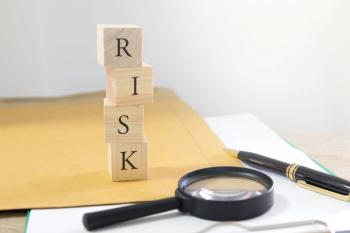
Using Technology to Manage Malpractice Risk
Can Your EHR Reduce Your Risk? Yes, say our experts, when used correctly. Here's your guide to using your EHR to better protect yourself against malpractice suits.
Imagine this scenario: Your patient's PSA levels have gone up slightly since the last time you saw him, so you decide to repeat the test in three months. At that time, the levels haven't changed, so you write an order to test again in six months.
Then a year goes by, and your patient is finally tested again and diagnosed with prostate cancer. He tries to sue you, claiming negligence for not testing more frequently.
In this case, accounted by James Gottesman, an urologist who founded a company that developed automated informed-consent tools, the physician was off the hook, as he had documented his reasoning in his EHR each step of the way.
A claim of negligence can often be nipped by good documentation, made easier and more consistent through the templates in the EHR, says Gottesman.
Using an EHR may also reduce paid malpractice settlements for physicians, according to a 2008 study in the Archives of Internal Medicine. The study found that 6.1 percent of physicians with EHRs had paid malpractice settlements in the preceding 10 years, compared with 10.8 percent of physicians without EHRs. More significantly, among the EHR users, 5.7 percent of the more active users paid settlements, compared with 12.1 percent of less active users.
"The use of EHRs may lead to fewer diagnostic errors, improved follow-up of abnormal test results, better guideline adherence, and fewer adverse clinical elements," the study authors wrote. "Alternatively, EHRs may be facilitating more extensive and more legible documentation of medical practice, resulting in stronger legal defenses when malpractice suits are filed."
Of course, EHR use won't be a panacea to malpractice woes, and it's not entirely clear yet if the technology shift will help bring down malpractice premiums or reduce claims. But experts agree that when used correctly, an EHR can help ease your risk.
"The EHR is a tool. It depends on how the tool is used," says Jeffrey Segal, a neurosurgeon and CEO and founder of Medical Justice Services Inc., based in Greensboro, N.C. "Not all EHRs are the same, and the ones docs love are the ones that can help the most."
Let's take a closer look at the ways an EHR can help, and the potential pitfalls that can expose your practice to increased risk.
How they can help
Steven Waldren, a family physician and director of the American Academy of Family Physicians' Center for Health IT, offers three areas in which a properly used EHR can help minimize malpractice risk:
Documentation. Solid, complete, and legible documentation can go a long way to protecting your practice. An EHR allows a practice to audit and track data entry, and ensure that information can't be changed or removed. Each move - and who makes it - is included in the record, and experts say documentation is one of the primary ways an EHR can help physicians avoid certain malpractice claims.
A computer system can also solve the problem of the physician's traditionally abysmal handwriting, says Elliot Menkowitz, an orthopedic surgeon and medical director of Doctors Advocate, which aims to protect healthcare professionals from frivolous lawsuits. "Doctors can't write legibly," he notes. "There have been many lawsuit cases that have occurred just because the prescription was misinterpreted by the pharmacists who couldn't read the doctor's writing." The EHR, however, is going to improve the handwriting, as well as the data entry, he says, by forcing the doctor to enter certain fields and document certain items that might have otherwise been overlooked.
Care-process automation. The EHR "doesn't allow things to slip through," Waldren explains. Templates and prompts ensure you will cover all the necessary points in the exam or procedure. For example, in most practices, a physician will be inclined to follow up on a case after receiving an abnormal lab result. But what happens if the physician never receives the lab results? "In an electronic system, those things can be tracked," Waldren says. The system can help track and demonstrate when procedures occurred, calls were made, and any action was taken - across the entire staff.
Decision-support tools. An EHR's decision-support tools, such as computerized alerts, clinical guidelines, and patient-specific information, can provide another safety net by improving patient care and avoiding error. An EHR can remind the physician of patient allergies, medications, and demonstrate that the physician followed certain guidelines, Waldren says.
How they won't help
Relying on an EHR to reduce your risk isn't without its hazards, however. In fact, EHR implementation can open your practice up to new risks if you're not careful, says consultant Ronald Sterling.
The missteps can happen even before the system is up and running, Sterling says, particularly if your practice hasn't committed fully to the process or opts for a system that isn't a good fit for the practice.
"It's a transformational exercise, and they have to make sure they are going to go through the correct steps in order to achieve their objectives," he says.
Problems can arise in the selection process if you choose a system that is not appropriate for your practice size or specialty, or in the customization of the product, if you don't create the proper templates or work flow.
For example, EHRs track the changes in a patient record differently, such as a note at the bottom of the original encounter note or a new note with a different day, Sterling says. Staff must understand - and be able to explain if facing a lawsuit - where to find current patient information.
Similarly, some practices use EHRs for some of the patient record and continue to rely on paper charts for certain information. That can lead to continuity-of-care snags. Using an EHR only partially or inconsistently can lead to gaps in care, or at least confusions in the documentation of care.
"There's a whole process you need to go through in order to mitigate risk, because you are going to be literally changing how your entire organization works, and you're dealing with a new tool to document patient care," Sterling says.
And remember how an EHR can help improve documentation? That same pro can become a con if you're not careful. It is possible, experts say, to over-document - including pages upon pages of information and making it hard to easily locate relevant information.
"Often you do get that eight to nine pages of stuff that is not relevant to the patient," Waldren says. "You can miss something in that."
With the old way of charting, Segal notes, "the meat was right in front of you." Now, a physician must sift through several pages to find the pertinent information. "The signal is there, but there is so much noise," he says. "It requires mental effort to extrapolate the signal from the noise, and I think it just burns you out."
What to do
Here's some advice on how to ensure you're using your EHR to help - not hurt - you:
• Focus on what information needs to be documented. Segal recommends physicians resist the urge to put together an eight-page document. "To do that, you'd be doing a healthy amount of cutting and pasting. And if you do that, sooner or later you're going to screw up." Waldren agrees, saying that particularly during transitions of care, consider a summary for the next physician that details only the most critical information that a clinician will need.
• Talk to your malpractice carrier about how using an EHR may affect your premiums, Waldren says. Remember, there's a difference between reducing malpractice risk and reducing malpractice payments. "They don't go hand in hand yet," he notes, adding that some carriers are giving discounts for EHR use. Not all physicians use the systems in the same way, which can make it difficult to provide financial incentives based on best practices for EHR use. Right now it will be up to your carrier to decide which metrics they use to determine any reduced payments.
• Pick an EHR you love. A practice that selects a system that fits well into the work flow and provides the right capabilities is more likely to use it properly, Segal says. Make sure you've tested and fully vetted the system, as well as made it through the transition process. And remember that the system should be saving you time - not adding to your workload. "Some systems work better than others," he adds. "If you love it and it works for you, you will keep using more of it."
In Summary
An EHR can help reduce a physician's malpractice risk - if used properly. Here's how to use the system to your advantage:
• Use prompts and templates to properly and legibly document a visit.
• Take advantage of tools to automate the care process, ensuring tests don't fall through the cracks.
• Resist the urge to over-document in the EHR.
• Select an appropriate EHR for your practice, and make sure to use it fully and consistently.
Sara Michael is editorial director of Diagnostic Imaging. She can be reached at sara.michael@ubm.com.
This article originally appeared in the March 2011 issue of Physicians Practice.
* Want to know the other side of the coin? Physician-attorney Lori Abel Meyerhoffer writes about how your EHR can inadvertently raise your malpractice risk. Read "
Newsletter
Optimize your practice with the Physicians Practice newsletter, offering management pearls, leadership tips, and business strategies tailored for practice administrators and physicians of any specialty.










